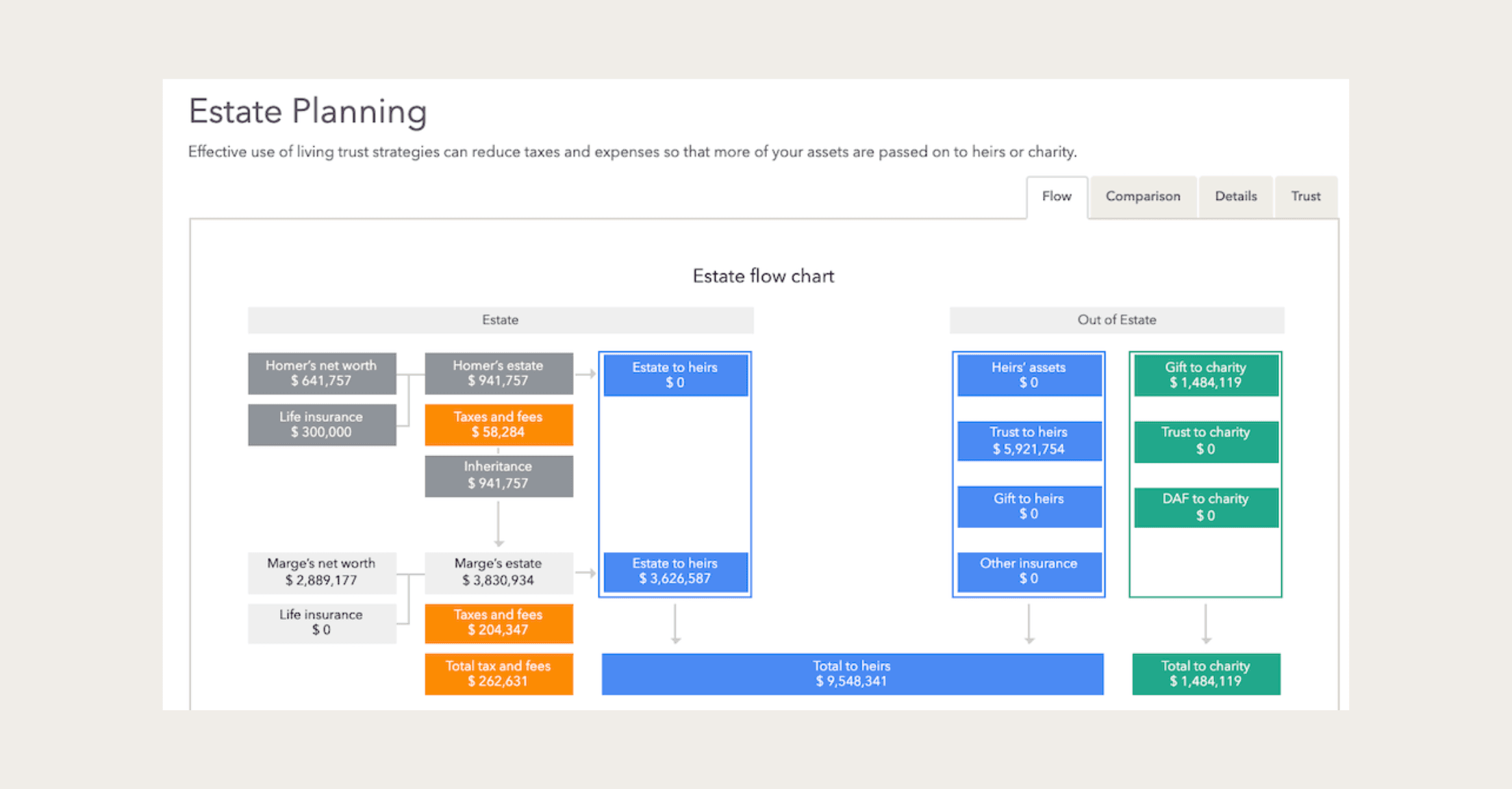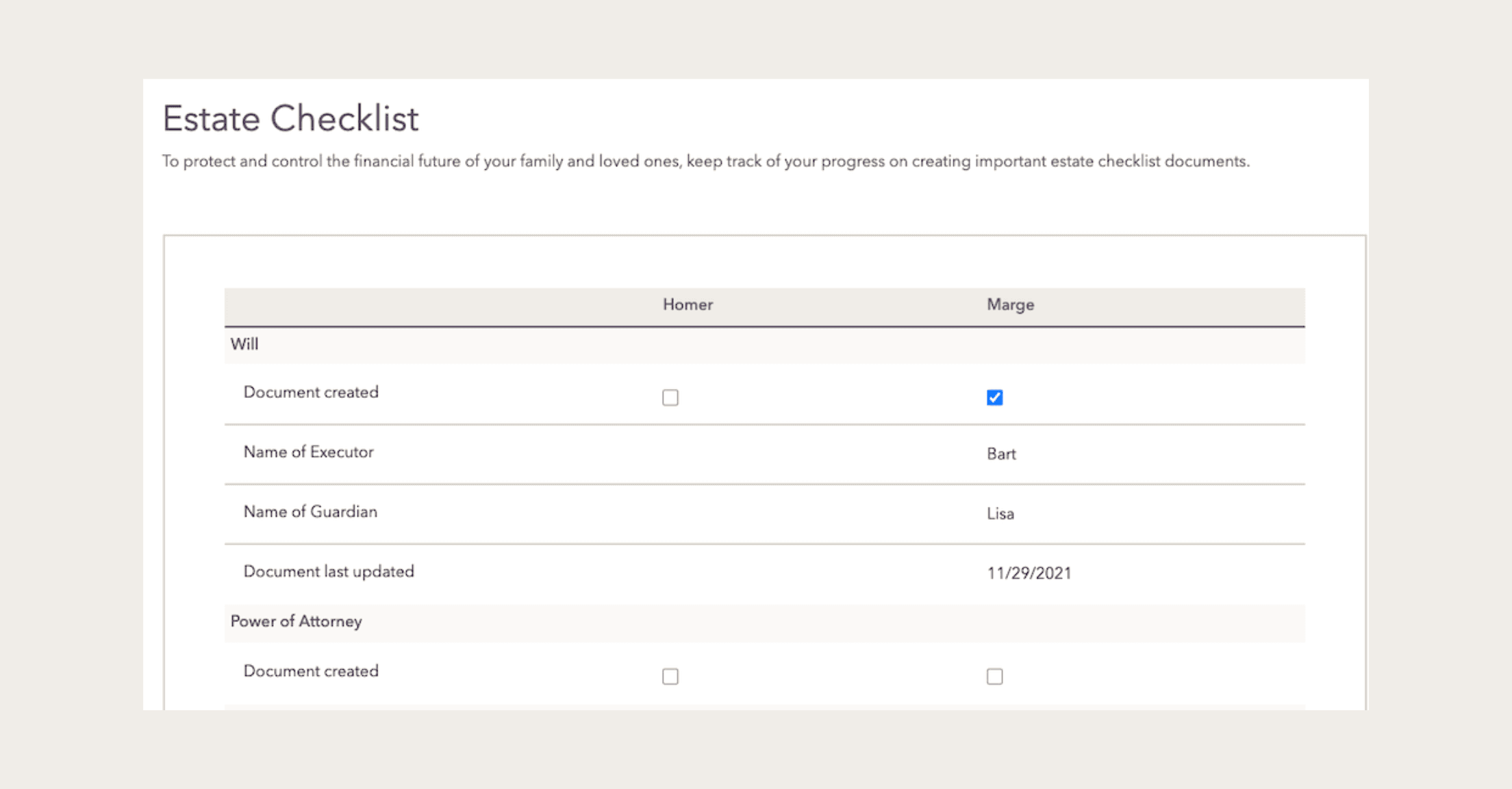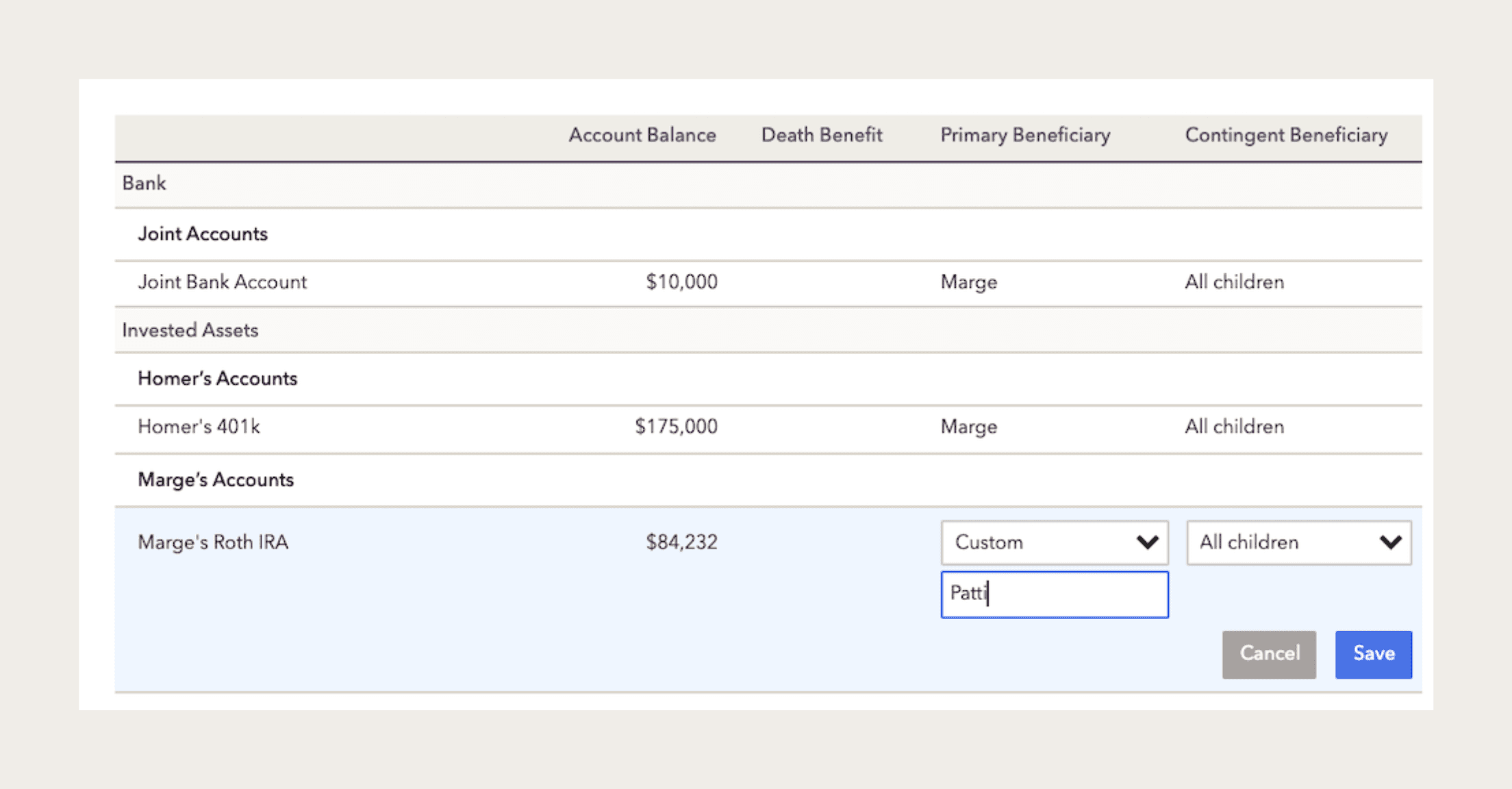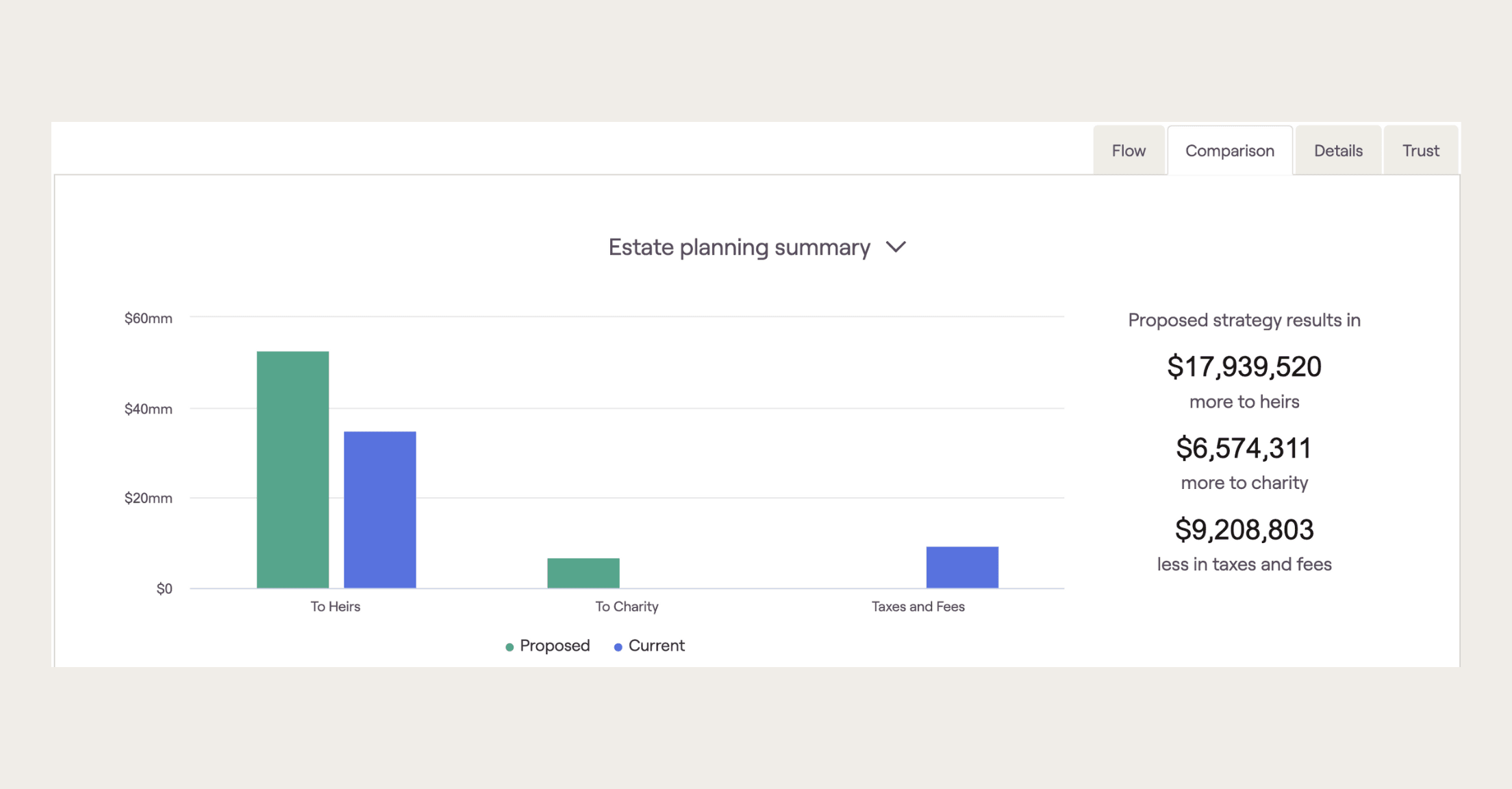
As the old adage goes, “more money, more problems”. While the majority of clients will find value in financial planning topics such as Retirement, Budgeting, and Social Security Optimization, your wealthiest clients—families with, say, over $10 million in net worth—are likely to encounter more complicated estate and tax situations than the average Joe. Every household is different, but below are planning opportunities within RightCapital that advisors rely on when working with high-net-worth individuals (HNWI).
Visualize the flow of estate assets

We are big fans of using visuals in the financial planning world, and you can do just that with our Estate flowchart which demonstrates how assets will flow from the client to a surviving spouse and additional heirs, including federal taxes to be taken out of the inheritance. Out-of-estate assets, such as trusts and charitable gifts—which may provide some tax relief—can also be illustrated. Important variables such as changes in planning horizon, funeral costs, and Deceased Spousal Unused Exclusion (DSUE) can be adjusted, then compared with the current situation to see any potential tax savings or effect on the amount received by heirs.
Ensure completion of estate tasks

It is important for clients to determine what will happen to hard-earned assets in the event of their passing, rather than leaving it up for survivors to do the guesswork. Keep track of the creation, names, and dates of important documents such as a will, power of attorney, a living will, health care proxy, beneficiary designations, and a living trust. Finalized documents can be stored securely within RightCapital’s Vault feature.
Track beneficiary designation

Families are always changing so it’s a good idea to review the Beneficiaries section periodically. Make sure clients stay up to date on who should receive access to their accounts after their plan ends. For example, if passing assets down to their grandchildren is important to them and they’ve just received good news about the arrival of a new grandbaby, track updates within the beneficiary section.
Protect wealth through trusts

Over the last few years, RightCapital has tripled the number of trust strategies we support. Model different trust types such as Charitable Lead Trust (CLT), Spousal Lifetime Access Trust (SLAT), Grantor Retained Annuity Trust (GRAT), and more. Current trusts can be set up during the data-entry process when looking at net worth and trust recommendations can be simulated while reviewing the Estate analysis module. This area is designed to show a trust strategy’s impact on assets passed to heirs, total estate taxes paid, and changes to retirement income stability.
Manage real estate assets
If your clients invest in real estate, model these assets within their taxable estate or, for example, within an Irrevocable Grantor Trust (IGT). Newer updates allow for converting existing real estate property to another property type—for example, categorizing an investment property as a vacation home. You can also account for 1031 exchanges, deferring any capital gains taxes.
Model tax law changes
Taxes are a hot topic in every election year (and, really, every year). Model different scenarios for your clients so they can see how each proposed tax law will impact their finances. You can adjust the tax law the plan is using within Settings: Tax Assumptions. For example, model the plan under the Tax Cut & Jobs Act that is sunsetting in 2025, an assumed extension of the law into perpetuity, or the 2017 tax law, with calculations built into the platform for you.
Maximize tax efficiencies
Model for your clients how to spend down retirement distributions in a tax-efficient manner by using our Distribution and Conversion module with options to fill up tax brackets so clients receive the maximum amount at times when taxes are lowest. Demonstrate what mega-back-door Roth conversions would look like for those clients whose incomes prevent them from regular Roth conversions.
Support important causes
Donating assets to charity is a win-win situation. Model charitable gifts within the data-entry process, whether they are cash, appreciated assets, Donor Advised Funds, or qualified charitable distributions related.
Adjust survivor account percentages
Another item that can be changed in the assumptions section is the account assumptions. If, for example, a client has children from a previous relationship, it’s possible that the surviving spouse would receive less than 100% of certain accounts.
Plan for the unexpected
Determine life insurance needs for each client based on future goals and expenses of survivors. As with other modules within our platform, you can enter adjustments to compare current coverage vs. proposed coverage to make recommendations.
If you would like to learn more about how RightCapital can help you add value for your clients, schedule a 1:1 demo with one of our specialists!